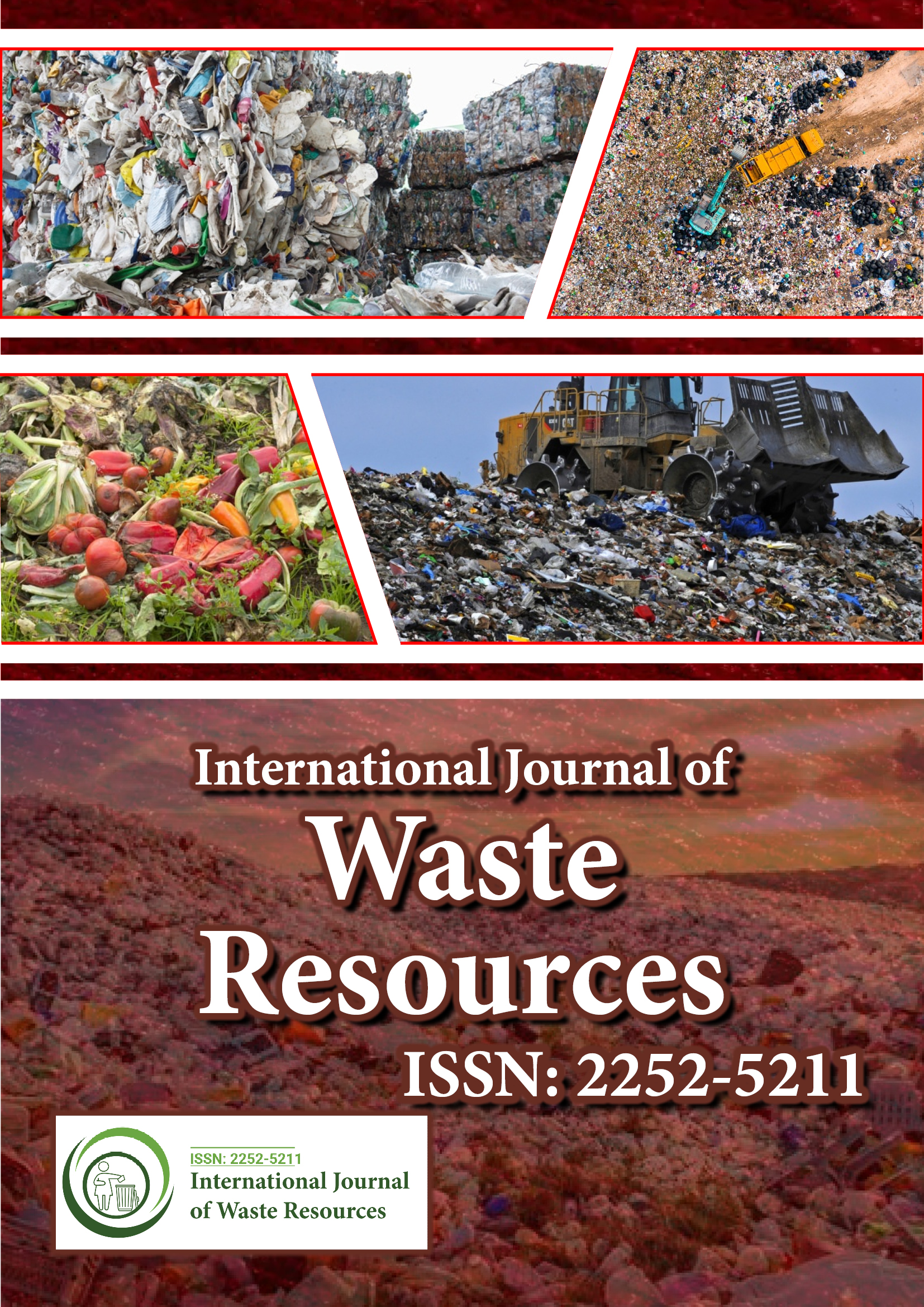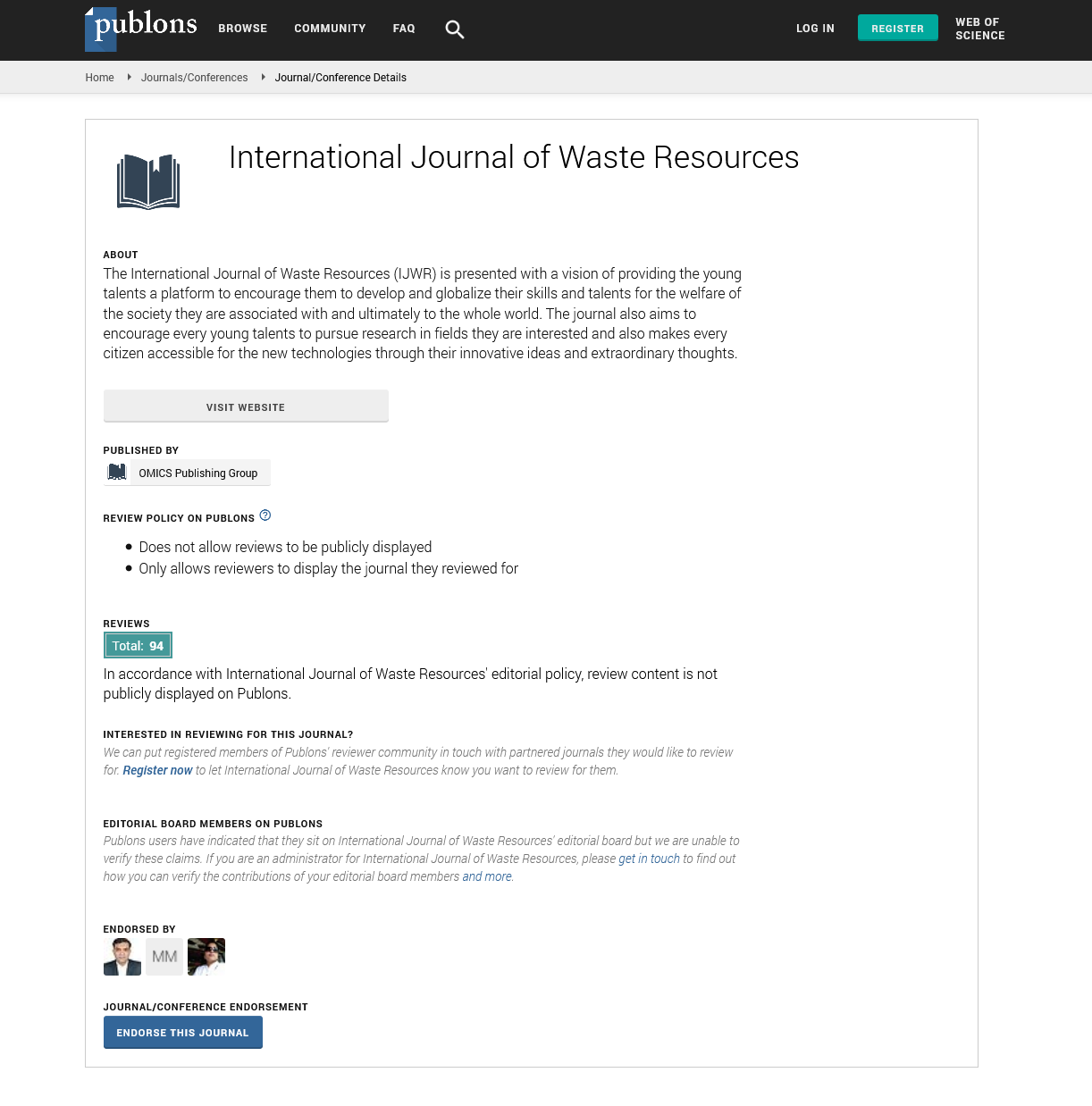PMC/PubMed Indexed Articles
Indexed In
- Open J Gate
- The Global Impact Factor (GIF)
- Open Archive Initiative
- VieSearch
- International Society of Universal Research in Sciences
- China National Knowledge Infrastructure (CNKI)
- CiteFactor
- Scimago
- Ulrich's Periodicals Directory
- Electronic Journals Library
- RefSeek
- Directory of Research Journal Indexing (DRJI)
- Hamdard University
- EBSCO A-Z
- Publons
- Google Scholar
Useful Links
Share This Page
Journal Flyer

Open Access Journals
- Agri and Aquaculture
- Biochemistry
- Bioinformatics & Systems Biology
- Business & Management
- Chemistry
- Clinical Sciences
- Engineering
- Food & Nutrition
- General Science
- Genetics & Molecular Biology
- Immunology & Microbiology
- Medical Sciences
- Neuroscience & Psychology
- Nursing & Health Care
- Pharmaceutical Sciences
Opinion Article - (2024) Volume 14, Issue 3
Plastic Waste Management: Strategies for Source Minimization and Recycling Innovation
Daniel Lodato*Received: 28-Aug-2024, Manuscript No. IJWR-24-27478; Editor assigned: 30-Aug-2024, Pre QC No. IJWR-24-27478(PQ); Reviewed: 13-Sep-2024, QC No. IJWR-24-27478; Revised: 20-Sep-2024, Manuscript No. IJWR-24-27478(R); Published: 27-Sep-2024, DOI: 10.35248/2252-5211.24.14.592
Description
With the exponential growth in plastic production and consumption, managing plastic waste has become an urgent issue that requires strategic solutions. The sheer volume of plastic waste, combined with its non-biodegradable nature, poses longterm environmental hazards. However, through effective plastic waste management strategies, particularly those focusing on source minimization and recycling innovation, it is possible to reduce the negative impact on the environment and create a more sustainable future. The most effective way to address plastic waste is by reducing its generation at the source. Source minimization refers to strategies that aim to prevent plastic waste from being created in the first place. This can be achieved through various measures, including changes in design, consumer behavior and corporate responsibility. One of the fundamental strategies for minimizing plastic waste is to redesign plastic products and packaging with sustainability in mind. The concept of "Design for Environment" (DFE) encourages manufacturers to create products that use less material, are easier to recycle and have minimal environmental impact. This can include reducing the thickness of plastic packaging, eliminating unnecessary components and designing products with the potential for a longer lifespan. Biodegradable alternatives and reusable packaging options, such as glass and metal, can also play a significant role in reducing plastic consumption. Shifting consumer behavior is essential in reducing plastic waste. Public awareness campaigns can educate individuals about the importance of reducing plastic use, reusing items and choosing eco-friendly alternatives. Governments, non-governmental organizations and industries have an essential role in promoting the benefits of reducing plastic consumption, such as bringing reusable bags to stores or choosing products with minimal packaging. These behavioral shifts can drive the demand for products that are less reliant on plastic. A powerful policy tool in the realm of plastic waste management is Extended Producer Responsibility (EPR). Under EPR frameworks, producers are held accountable for the entire lifecycle of their products, including disposal. This means that manufacturers are incentivized to design products with end-of-life recycling in mind, ensuring that plastics do not end up in landfills or the environment. Implementing EPR can lead to the reduction of plastic production, encourage the use of recyclable materials and help fund the infrastructure needed for waste collection and recycling. While source minimization is a key part of the solution, recycling remains an essential component of plastic waste management. However, conventional recycling practices have limitations, particularly when dealing with mixed plastics or contaminated materials. To address these challenges, innovation in recycling technologies is needed to enhance the efficiency and effectiveness of recycling systems. Mechanical recycling involves the physical processing of plastic waste into new products without altering its chemical structure. Traditional mechanical recycling systems often struggle with certain types of plastic, such as multi-layered packaging, which can be difficult to separate and recycle. New technological advancements in sorting and separating techniques, such as near-infrared spectroscopy and automated sorting systems, have made it possible to process a wider variety of plastics more efficiently. These innovations allow for higher-quality recycled plastic and increased recycling rates. Chemical recycling, also known as advanced recycling, involves breaking down plastics into their basic chemical components, which can then be reprocessed into new plastic materials. Unlike mechanical recycling, chemical recycling can handle mixed plastics and contaminated materials that would otherwise be sent to landfills. This method holds significant potential for dealing with challenging plastics, such as those used in food packaging or multi-material products. By converting plastic waste back into raw materials, chemical recycling can produce highquality products that are virtually indistinguishable from virgin plastic. In addition to mechanical and chemical recycling, biological methods for plastic waste management are gaining attention.
Conclusion
Researchers are exploring the use of enzymes and microorganisms capable of breaking down plastics into biodegradable components. For example, certain bacteria have been found to digest polyethylene, one of the most commonly used plastics. This emerging field of biological recycling has the potential to revolutionize the way we manage plastic waste by enabling the breakdown of plastics that are traditionally difficult to recycle. Collaboration between governments, industries, and consumers is essential to achieving meaningful change. Collective efforts can develop global standards for plastic recycling, encourage investment in new technologies, and facilitate the sharing of best practices across industries. Publicprivate partnerships can also help scale up recycling infrastructure, particularly in regions with limited access to waste management services.
Citation: Lodato D (2024). Plastic Waste Management: Strategies for Source Minimization and Recycling Innovation. Int J Waste Resour. 14:592.
Copyright: © Lodato D. This is an open-access article distributed under the terms of the Creative Commons Attribution License, which permits unrestricted use, distribution, and reproduction in any medium, provided the original author and source are credited.

